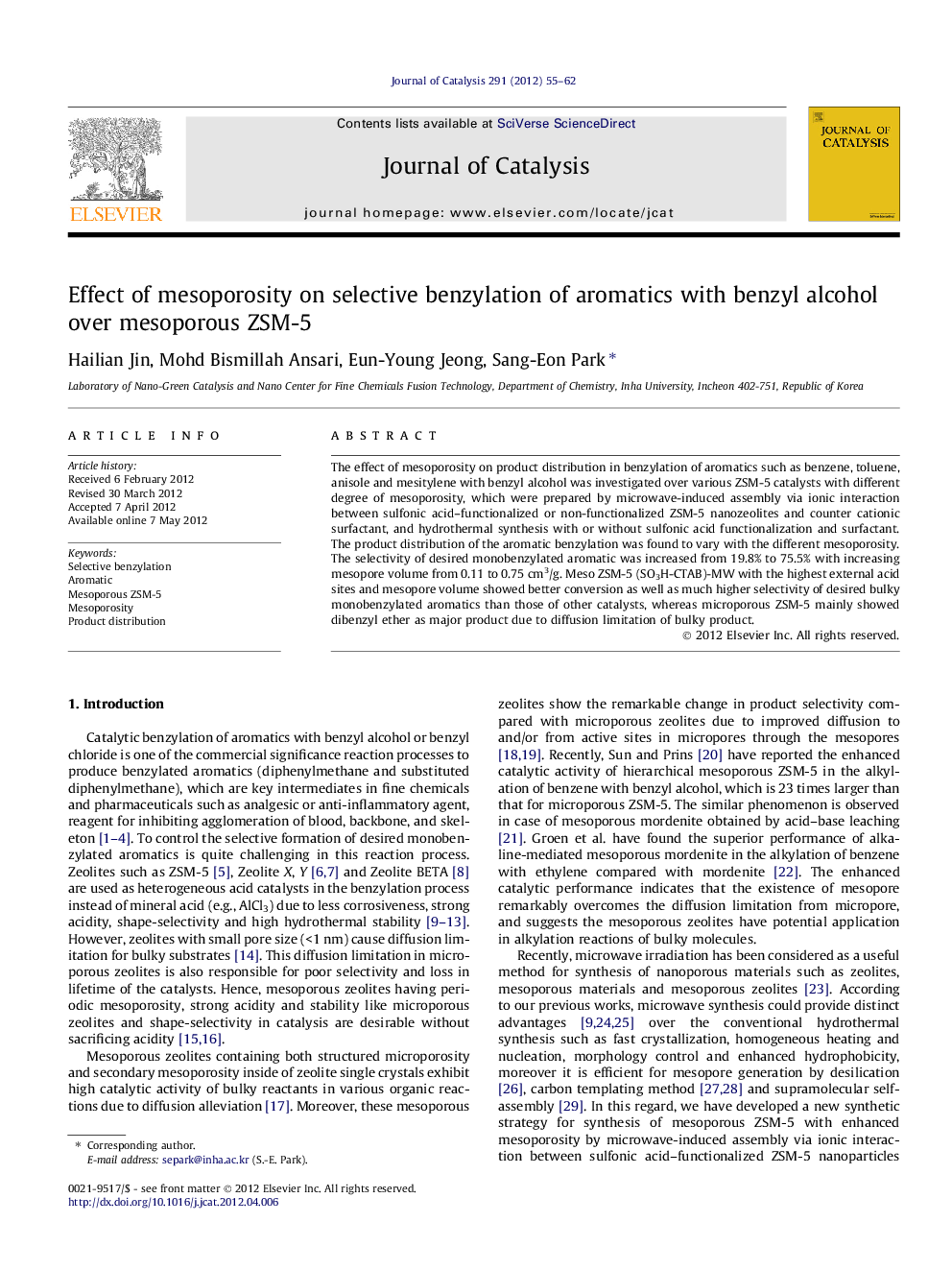| Article ID | Journal | Published Year | Pages | File Type |
|---|---|---|---|---|
| 61523 | Journal of Catalysis | 2012 | 8 Pages |
The effect of mesoporosity on product distribution in benzylation of aromatics such as benzene, toluene, anisole and mesitylene with benzyl alcohol was investigated over various ZSM-5 catalysts with different degree of mesoporosity, which were prepared by microwave-induced assembly via ionic interaction between sulfonic acid–functionalized or non-functionalized ZSM-5 nanozeolites and counter cationic surfactant, and hydrothermal synthesis with or without sulfonic acid functionalization and surfactant. The product distribution of the aromatic benzylation was found to vary with the different mesoporosity. The selectivity of desired monobenzylated aromatic was increased from 19.8% to 75.5% with increasing mesopore volume from 0.11 to 0.75 cm3/g. Meso ZSM-5 (SO3H-CTAB)-MW with the highest external acid sites and mesopore volume showed better conversion as well as much higher selectivity of desired bulky monobenzylated aromatics than those of other catalysts, whereas microporous ZSM-5 mainly showed dibenzyl ether as major product due to diffusion limitation of bulky product.
Graphical abstractSelectivity of monobenzylated aromatic increased with the increase of mesoporosity was confirmed over ZSM-5 catalysts with different degree of mesoporosity.Figure optionsDownload full-size imageDownload high-quality image (152 K)Download as PowerPoint slideHighlights► Selective benzylation of aromatics by ZSM-5 catalysts with varied mesoporosity. ► Meso ZSM-5 showed improved catalytic activity due to enhanced mesoporosity. ► Improved mesoporosity affected the external acid sites. ► Selectivity of monobenzylated aromatic increased with the increase of mesoporosity. ► Desired monobenzylated aromatics were predominant product over Meso ZSM-5.
